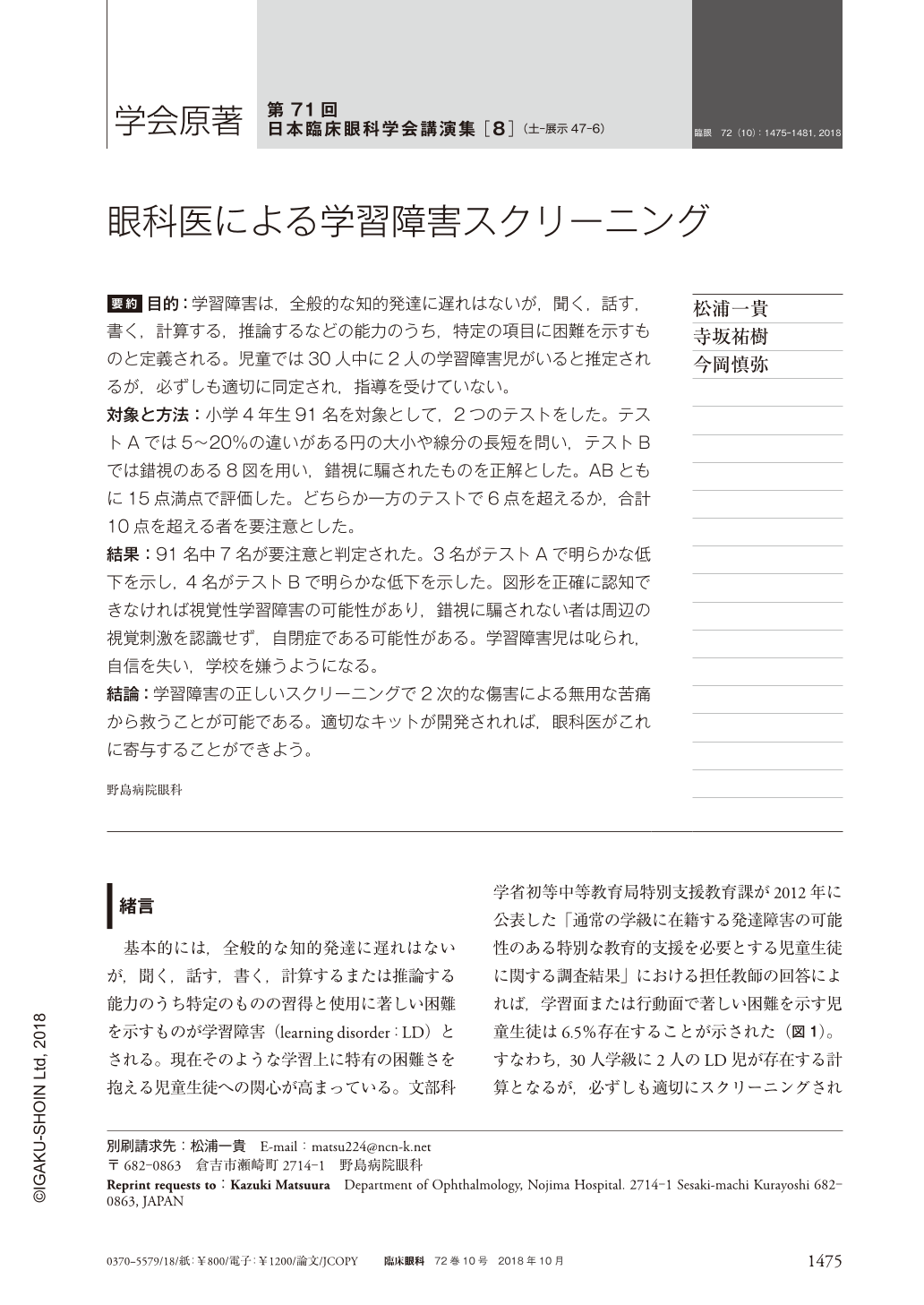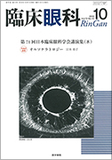Japanese
English
- 有料閲覧
- Abstract 文献概要
- 1ページ目 Look Inside
- 参考文献 Reference
要約 目的:学習障害は,全般的な知的発達に遅れはないが,聞く,話す,書く,計算する,推論するなどの能力のうち,特定の項目に困難を示すものと定義される。児童では30人中に2人の学習障害児がいると推定されるが,必ずしも適切に同定され,指導を受けていない。
対象と方法:小学4年生91名を対象として,2つのテストをした。テストAでは5〜20%の違いがある円の大小や線分の長短を問い,テストBでは錯視のある8図を用い,錯視に騙されたものを正解とした。ABともに15点満点で評価した。どちらか一方のテストで6点を超えるか,合計10点を超える者を要注意とした。
結果:91名中7名が要注意と判定された。3名がテストAで明らかな低下を示し,4名がテストBで明らかな低下を示した。図形を正確に認知できなければ視覚性学習障害の可能性があり,錯視に騙されない者は周辺の視覚刺激を認識せず,自閉症である可能性がある。学習障害児は叱られ,自信を失い,学校を嫌うようになる。
結論:学習障害の正しいスクリーニングで2次的な傷害による無用な苦痛から救うことが可能である。適切なキットが開発されれば,眼科医がこれに寄与することができよう。
Abstract Purpose:Learning disability is defined as someone who has normal intellectual development but who shows difficulty in listening, speaking, writing, calculating, or logical inference. Two out of 30 children are estimated to have learning disability, but they are no properly screened or instructed.
Cases and Method:This study was made on 91 pupils in the fourth grade of an elementary school. They were evaluated by two tests. In Test A, they were asked to tell the difference in circles and lines that were different in size by 5 to 20%. In Test B, they were presented with 8 types of optical illusion. Those fooled by the illusion were deemed as normal.
Results:Out of 91 examinees, 7 were regarded as requiring caution. Three and four examinees performed manifestly poorly in Test A and B respectively.
Comment:Children who cannot accurately recognize diagrams may have learning disability. Those who are not fooled by optical illusions may not recognize peripheral visual stimuli, and are suspected to have autistic traits. Children with learning disability are reprimanded, lose confidence, and develop aversion to school.
Conclusion:Children with learning disability are to be properly screened and treated. Ophthalmologists are expected to participate if an appropriate screening kit is developed.

Copyright © 2018, Igaku-Shoin Ltd. All rights reserved.


